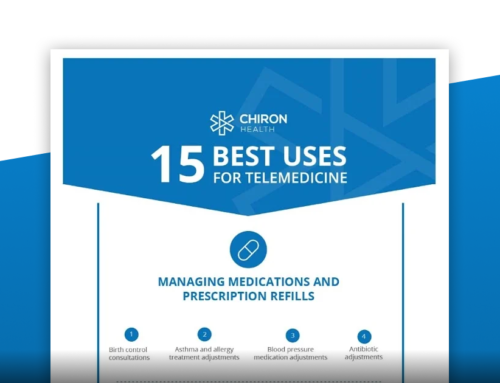Most providers don’t get into healthcare because they love evaluating, implementing, and using new software technology, but it is becoming an increasingly important part of the job. This is a double-edged sword in many ways. The reason that technology has become such an essential part of practicing medicine is that it has the potential for amazing benefits. It can increase practice efficiency and revenue; it can help support patient loyalty, and even result in better health outcomes. Telemedicine technology for video visits indeed produces all of these benefits for many practices.
But the challenge with practice management technology is that all providers aren’t technical experts. It can be challenging to know what to look for and hard to tell if the vendors you evaluate are on the up and up. This post can help. We’re laying out all of the essential features that you should look for when you assess solutions for integrating video visits into your practice. We hope you’ll consider Direct Health, but even if you don’t, this information should be valuable.
HIPAA Compliance
There are many apps for video conferencing on the market (probably even on your phone). Very few are designed to meet HIPAA’s requirements for patient confidentiality. Any solution you consider should have been developed for use in a clinical healthcare environment. It should send information in an encrypted format and leverage peer-to-peer connections to ensure that personal data is protected at all times. Also, make sure that the vendor does not store any video to avoid unauthorized access to personal information.
Business Associate Agreement
Along these same lines, HIPAA requires that certain people or entities who work with healthcare providers, such as accountants, transcriptionists, lawyers, and technology providers that will potentially have access to protected patient data enter into a Business Associate Agreement. This agreement compels the partner entity to use the same care around patient data as the provider must use. Be sure that your telehealth platform vendor is willing to enter into such an agreement (and Direct Health does).
Reimbursement Rules Engine
For most practices, one of the main goals for introducing virtual visits is increasing revenue. For that to happen, you need to be sure you are reimbursed for each virtual encounter. Although most states now require private payers to reimburse for telemedicine, the regulatory landscape and payer practices are still changing frequently and can be confusing. That’s why it makes sense to look for a system that has an automated rules engine, regularly updated by experts in the field, to determine if your patient is eligible for a video visit. Chiron Telehealth, a Direct Health company specializing in HIPAA-compliant video visits, has just such an engine.
If the provider is confident that their eligibility engine is accurate, they should be happy to guarantee that if they verify a visit and the claim is denied, they’ll work with the payer to get your reimbursement or pay you themselves if they are unable to recover.
EHR Integration
You never want to have to do duplicate entry in your EHR or practice management system and your telemedicine platform. Look for a telehealth system that can seamlessly pass information back and forth between to your EHR. This will simplify life for your staff and reduce opportunities for error.
Patient Notifications
One way that telemedicine increase practice revenue is by reducing the number of no-shows and last-minute cancellations. To avoid no-shows for video visits, choose a solution that makes it easy for your patients to get set up for their visit and sends them a simple link when it is time to log in. Direct Health’s Waiting Room allows you to generate your own personalized video visit meeting link, create a virtual waiting room for your patients, and then allows you to admit them without your patients ever having to install or register for the Direct Health app.
Custom Branding
In order to make it clear to patients who is providing their care, choose a solution that integrates your brand identity. This will make telemedicine feel like an extension of your practice, rather than a third-party system. You want to keep control of your brand across the entire patient experience.
Patient Marketing Support
Your telehealth program won’t take off unless your patients are aware of the offer, understand the benefits, and know how to schedule an appointment. You can find a telemedicine software vendor with solutions and resources to help market the service to your patients.
In-App Support for Patients and Providers
Of course, the solution should be easy to use and intuitive on both the staff and patient sides, but questions will always pop-up. Ideally, the solution you select will have in-app chat support, so you don’t have to log a ticket or wait forever for a response.
This isn’t a long list, but it represents the baseline for setting expectations for any solution you consider. If you stick to it, there should be few barriers to a telemedicine program that delights both patients and staff.






Leave A Comment